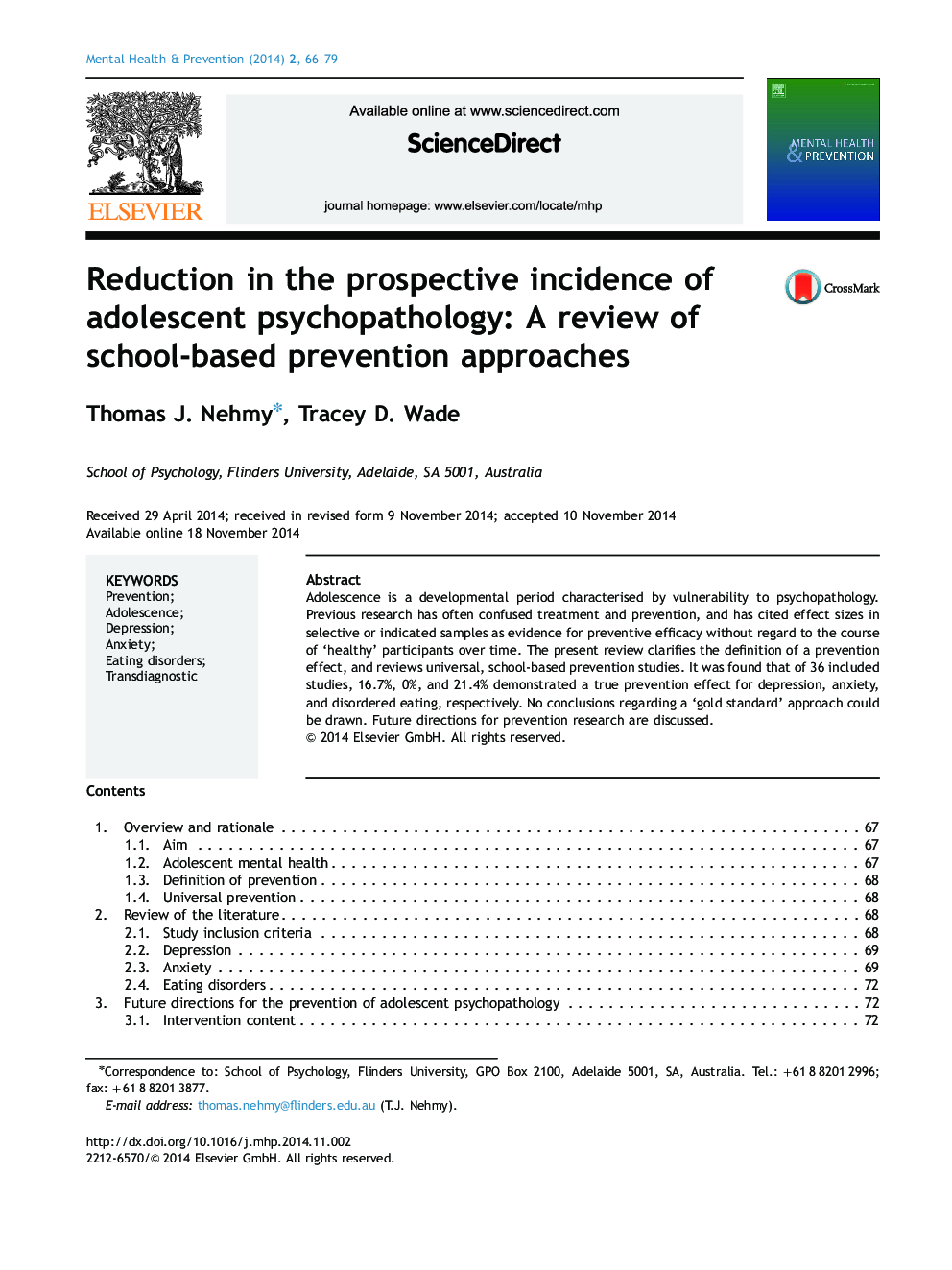| Article ID | Journal | Published Year | Pages | File Type |
|---|---|---|---|---|
| 330403 | Mental Health & Prevention | 2014 | 14 Pages |
Abstract
Adolescence is a developmental period characterised by vulnerability to psychopathology. Previous research has often confused treatment and prevention, and has cited effect sizes in selective or indicated samples as evidence for preventive efficacy without regard to the course of ‘healthy’ participants over time. The present review clarifies the definition of a prevention effect, and reviews universal, school-based prevention studies. It was found that of 36 included studies, 16.7%, 0%, and 21.4% demonstrated a true prevention effect for depression, anxiety, and disordered eating, respectively. No conclusions regarding a ‘gold standard’ approach could be drawn. Future directions for prevention research are discussed.
Related Topics
Health Sciences
Medicine and Dentistry
Medicine and Dentistry (General)
Authors
Thomas J. Nehmy, Tracey D. Wade,
